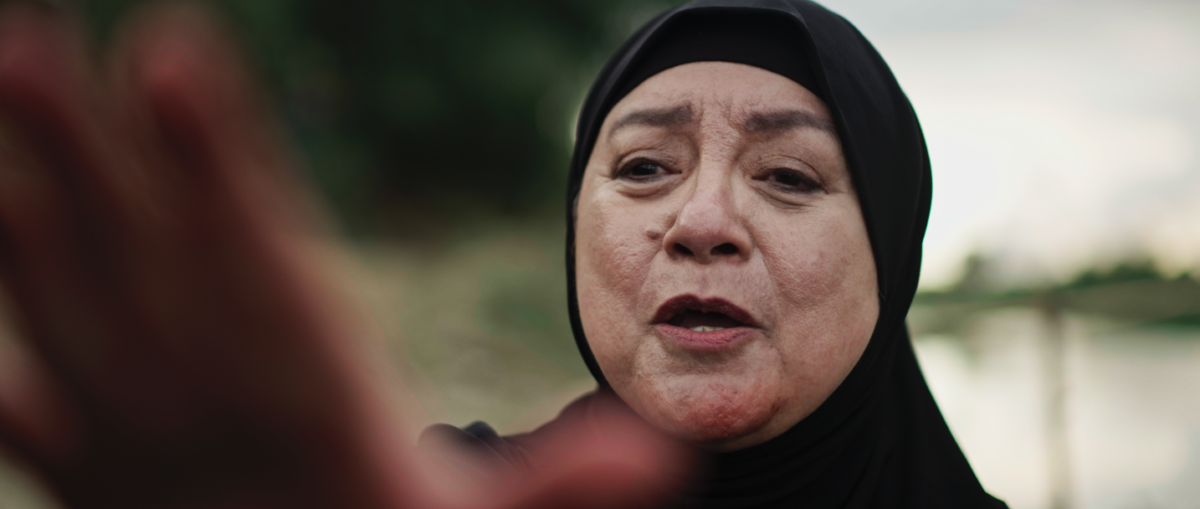Where is music in a film? That it is inherently unlocatable has animated much of its theorization. Michel Chion popularized the term acousmêtre to make sense of the disjuncture between image and sound (specifically, it referred to the disembodied voice that haunts so many indelible movies, but it invites more general reflection on the spatial indeterminacy of soundtracks). Brillante Mendoza here seems to be chasing down Nainita Desai’s score. Neighing horses—one white, one black, calling the keys of a piano to mind—gallop across a cornfield toward some person, place, or thing offscreen. A woman, seated in a hijab, husking corn, looks up and then walks toward them. The woodwinds in the orchestra halt for a fleeting close-up on her face, decorated with beads of sweat, as the violins enter to introduce another pair: two men in blood-soaked robes harmonically hacking off leaves with machetes. The woman embraces one of them, but as soon as she’s turned around (to look for what? the horses or the music?), he’s disappeared. Should she have kept her eyes on the other? Was he the strange sound, the music? The orchestra crescendos as he, wading in a river, reaches his arm out to an older man in a boat and she screams, “Abdel! Don’t go with your father!” The next shot, of the boat gliding upstream, bears only the placid diegetic sound of water.
Moro
Moro (Brillante Mendoza x Nainita Desai, 2023)
